自然语言处理从入门到应用——LangChain:记忆(Memory)-[记忆的类型Ⅰ]
分类目录:《自然语言处理从入门到应用》总目录
会话缓存记忆ConversationBufferMemory
本节将介绍如何使用对话缓存记忆ConversationBufferMemory。这种记忆方式允许存储消息,并将消息提取到一个变量中,我们首先将其提取为字符串:
from langchain.memory import ConversationBufferMemorymemory = ConversationBufferMemory()
memory.save_context({"input": "hi"}, {"output": "whats up"})
memory.load_memory_variables({})
输出:
{'history': 'Human: hi\nAI: whats up'}
我们还可以将历史记录作为消息列表获取。如果我们与聊天模型一起使用,这非常有用:
memory = ConversationBufferMemory(return_messages=True)
memory.save_context({"input": "hi"}, {"output": "whats up"})
memory.load_memory_variables({})
输出:
{'history': [HumanMessage(content='hi', additional_kwargs={}),AIMessage(content='whats up', additional_kwargs={})]}
在链式结构中使用
我们还可以在链式结构中使用它,设置verbose=True以便我们可以看到提示:
from langchain.llms import OpenAI
from langchain.chains import ConversationChainllm = OpenAI(temperature=0)
conversation = ConversationChain(llm=llm, verbose=True, memory=ConversationBufferMemory()
)
conversation.predict(input="Hi there!")
日志输出:
> Entering new ConversationChain chain...
Prompt after formatting:
The following is a friendly conversation between a human and an AI. The AI is talkative and provides lots of specific details from its context. If the AI does not know the answer to a question, it truthfully says it does not know.Current conversation:Human: Hi there!
AI:> Finished chain.
输出:
" Hi there! It's nice to meet you. How can I help you today?"
输入:
conversation.predict(input="I'm doing well! Just having a conversation with an AI.")
日志输出:
> Entering new ConversationChain chain...
Prompt after formatting:
The following is a friendly conversation between a human and an AI. The AI is talkative and provides lots of specific details from its context. If the AI does not know the answer to a question, it truthfully says it does not know.Current conversation:
Human: Hi there!
AI: Hi there! It's nice to meet you. How can I help you today?
Human: I'm doing well! Just having a conversation with an AI.
AI:> Finished chain.
输出:
" That's great! It's always nice to have a conversation with someone new. What would you like to talk about?"
输入:
conversation.predict(input="Tell me about yourself.")
日志输出:
> Entering new ConversationChain chain...
Prompt after formatting:
The following is a friendly conversation between a human and an AI. The AI is talkative and provides lots of specific details from its context. If the AI does not know the answer to a question, it truthfully says it does not know.Current conversation:
Human: Hi there!
AI: Hi there! It's nice to meet you. How can I help you today?
Human: I'm doing well! Just having a conversation with an AI.
AI: That's great! It's always nice to have a conversation with someone new. What would you like to talk about?
Human: Tell me about yourself.
AI:> Finished chain.
输出:
" Sure! I'm an AI created to help people with their everyday tasks. I'm programmed to understand natural language and provide helpful information. I'm also constantly learning and updating my knowledge base so I can provide more accurate and helpful answers."
会话缓存记忆ConversationBufferWindowMemory
会话缓存记忆ConversationBufferWindowMemory保留了对话中随时间变化的交互列表。它只使用最后的 K K K次交互。这对于保持最近交互的滑动窗口很有用,以防止缓冲区过大。
from langchain.memory import ConversationBufferWindowMemorymemory = ConversationBufferWindowMemory(k=1)
memory.save_context({"input": "hi"}, {"output": "whats up"})
memory.save_context({"input": "not much you"}, {"output": "not much"})
memory.load_memory_variables({})
输出:
{'history': 'Human: not much you\nAI: not much'}
我们还可以将历史记录作为消息列表获取,如果我们将其与聊天模型一起使用,这将非常有用:
memory = ConversationBufferWindowMemory(k=1, return_messages=True)memory.save_context({"input": "hi"}, {"output": "whats up"})
memory.save_context({"input": "not much you"}, {"output": "not much"})
memory.load_memory_variables({})
输出:
{'history': [HumanMessage(content='not much you', additional_kwargs={}),
AIMessage(content='not much', additional_kwargs={})]}
Using in a chain
在下面的示例中再次设置verbose=True以便查看提示:
from langchain.llms import OpenAI
from langchain.chains import ConversationChainconversation_with_summary = ConversationChain(llm=OpenAI(temperature=0), memory=ConversationBufferWindowMemory(k=2), verbose=True
)conversation_with_summary.predict(input="Hi, what's up?")
日志输出:
> Entering new ConversationChain chain...
Prompt after formatting:
The following is a friendly conversation between a human and an AI. The AI is talkative and provides lots of specific details from its context. If the AI does not know the answer to a question, it truthfully says it does not know.Current conversation:Human: Hi, what's up?
AI:> Finished chain.
输出:
" Hi there! I'm doing great. I'm currently helping a customer with a technical issue. How about you?"
输入:
conversation_with_summary.predict(input="What's their issues?")
日志输出:
> Entering new ConversationChain chain...
Prompt after formatting:
The following is a friendly conversation between a human and an AI. The AI is talkative and provides lots of specific details from its context. If the AI does not know the answer to a question, it truthfully says it does not know.Current conversation:
Human: Hi, what's up?
AI: Hi there! I'm doing great. I'm currently helping a customer with a technical issue. How about you?
Human: What's their issues?
AI:> Finished chain.
输出:
" The customer is having trouble connecting to their Wi-Fi network. I'm helping them troubleshoot the issue and get them connected."
输入:
conversation_with_summary.predict(input="Is it going well?")
输出:
> Entering new ConversationChain chain...
Prompt after formatting:
The following is a friendly conversation between a human and an AI. The AI is talkative and provides lots of specific details from its context. If the AI does not know the answer to a question, it truthfully says it does not know.Current conversation:
Human: Hi, what's up?
AI: Hi there! I'm doing great. I'm currently helping a customer with a technical issue. How about you?
Human: What's their issues?
AI: The customer is having trouble connecting to their Wi-Fi network. I'm helping them troubleshoot the issue and get them connected.
Human: Is it going well?
AI:> Finished chain.
输出:
" Yes, it's going well so far. We've already identified the problem and are now working on a solution."
当前,若继续对话则" Hi there! I'm doing great. I'm currently helping a customer with a technical issue. How about you?"的记忆将被遗忘:
conversation_with_summary.predict(input="What's the solution?")
日志输出:
> Entering new ConversationChain chain...
Prompt after formatting:
The following is a friendly conversation between a human and an AI. The AI is talkative and provides lots of specific details from its context. If the AI does not know the answer to a question, it truthfully says it does not know.Current conversation:
Human: What's their issues?
AI: The customer is having trouble connecting to their Wi-Fi network. I'm helping them troubleshoot the issue and get them connected.
Human: Is it going well?
AI: Yes, it's going well so far. We've already identified the problem and are now working on a solution.
Human: What's the solution?
AI:> Finished chain.
输出:
" The solution is to reset the router and reconfigure the settings. We're currently in the process of doing that."
实体记忆(Entity Memory)
本节演示了如何使用一个记忆模块来记录有关特定实体的信息。它使用语言模型(LLMs)提取实体相关的信息,并随着时间的推移逐渐积累对该实体的知识。让我们首先通过一个例子来了解如何使用这个功能:
from langchain.llms import OpenAI
from langchain.memory import ConversationEntityMemoryllm = OpenAI(temperature=0)
memory = ConversationEntityMemory(llm=llm)
_input = {"input": "Deven & Sam are working on a hackathon project"}
memory.load_memory_variables(_input)
memory.save_context(_input,{"output": " That sounds like a great project! What kind of project are they working on?"}
)
memory.load_memory_variables({"input": 'who is Sam'})
输出:
{'history': 'Human: Deven & Sam are working on a hackathon project\nAI: That sounds like a great project! What kind of project are they working on?',
'entities': {'Sam': 'Sam is working on a hackathon project with Deven.'}}
输入:
memory = ConversationEntityMemory(llm=llm, return_messages=True)
_input = {"input": "Deven & Sam are working on a hackathon project"}
memory.load_memory_variables(_input)
memory.save_context(_input,{"output": " That sounds like a great project! What kind of project are they working on?"}
)
memory.load_memory_variables({"input": 'who is Sam'})
输出:
{'history': [HumanMessage(content='Deven & Sam are working on a hackathon project', additional_kwargs={}),
AIMessage(content=' That sounds like a great project! What kind of project are they working on?', additional_kwargs={})],
'entities': {'Sam': 'Sam is working on a hackathon project with Deven.'}}
在链中调用
from langchain.chains import ConversationChain
from langchain.memory import ConversationEntityMemory
from langchain.memory.prompt import ENTITY_MEMORY_CONVERSATION_TEMPLATE
from pydantic import BaseModel
from typing import List, Dict, Any
conversation = ConversationChain(llm=llm, verbose=True,prompt=ENTITY_MEMORY_CONVERSATION_TEMPLATE,memory=ConversationEntityMemory(llm=llm)
)conversation.predict(input="Deven & Sam are working on a hackathon project")
日志输出:
> Entering new ConversationChain chain...
Prompt after formatting:
You are an assistant to a human, powered by a large language model trained by OpenAI.You are designed to be able to assist with a wide range of tasks, from answering simple questions to providing in-depth explanations and discussions on a wide range of topics. As a language model, you are able to generate human-like text based on the input you receive, allowing you to engage in natural-sounding conversations and provide responses that are coherent and relevant to the topic at hand.You are constantly learning and improving, and your capabilities are constantly evolving. You are able to process and understand large amounts of text, and can use this knowledge to provide accurate and informative responses to a wide range of questions. You have access to some personalized information provided by the human in the Context section below. Additionally, you are able to generate your own text based on the input you receive, allowing you to engage in discussions and provide explanations and descriptions on a wide range of topics.Overall, you are a powerful tool that can help with a wide range of tasks and provide valuable insights and information on a wide range of topics. Whether the human needs help with a specific question or just wants to have a conversation about a particular topic, you are here to assist.Context:
{'Deven': 'Deven is working on a hackathon project with Sam.', 'Sam': 'Sam is working on a hackathon project with Deven.'}Current conversation:Last line:
Human: Deven & Sam are working on a hackathon project
You:> Finished chain.
输出:
' That sounds like a great project! What kind of project are they working on?'
输入:
conversation.memory.entity_store.store
输出:
{'Deven': 'Deven is working on a hackathon project with Sam, which they are entering into a hackathon.',
'Sam': 'Sam is working on a hackathon project with Deven.'}
输入:
conversation.predict(input="They are trying to add more complex memory structures to Langchain")
日志输出:
> Entering new ConversationChain chain...
Prompt after formatting:
You are an assistant to a human, powered by a large language model trained by OpenAI.You are designed to be able to assist with a wide range of tasks, from answering simple questions to providing in-depth explanations and discussions on a wide range of topics. As a language model, you are able to generate human-like text based on the input you receive, allowing you to engage in natural-sounding conversations and provide responses that are coherent and relevant to the topic at hand.You are constantly learning and improving, and your capabilities are constantly evolving. You are able to process and understand large amounts of text, and can use this knowledge to provide accurate and informative responses to a wide range of questions. You have access to some personalized information provided by the human in the Context section below. Additionally, you are able to generate your own text based on the input you receive, allowing you to engage in discussions and provide explanations and descriptions on a wide range of topics.Overall, you are a powerful tool that can help with a wide range of tasks and provide valuable insights and information on a wide range of topics. Whether the human needs help with a specific question or just wants to have a conversation about a particular topic, you are here to assist.Context:
{'Deven': 'Deven is working on a hackathon project with Sam, which they are entering into a hackathon.', 'Sam': 'Sam is working on a hackathon project with Deven.', 'Langchain': ''}Current conversation:
Human: Deven & Sam are working on a hackathon project
AI: That sounds like a great project! What kind of project are they working on?
Last line:
Human: They are trying to add more complex memory structures to Langchain
You:> Finished chain.
输出:
' That sounds like an interesting project! What kind of memory structures are they trying to add?'
输入:
conversation.predict(input="They are adding in a key-value store for entities mentioned so far in the conversation.")
日志输出:
> Entering new ConversationChain chain...
Prompt after formatting:
You are an assistant to a human, powered by a large language model trained by OpenAI.You are designed to be able to assist with a wide range of tasks, from answering simple questions to providing in-depth explanations and discussions on a wide range of topics. As a language model, you are able to generate human-like text based on the input you receive, allowing you to engage in natural-sounding conversations and provide responses that are coherent and relevant to the topic at hand.You are constantly learning and improving, and your capabilities are constantly evolving. You are able to process and understand large amounts of text, and can use this knowledge to provide accurate and informative responses to a wide range of questions. You have access to some personalized information provided by the human in the Context section below. Additionally, you are able to generate your own text based on the input you receive, allowing you to engage in discussions and provide explanations and descriptions on a wide range of topics.Overall, you are a powerful tool that can help with a wide range of tasks and provide valuable insights and information on a wide range of topics. Whether the human needs help with a specific question or just wants to have a conversation about a particular topic, you are here to assist.Context:
{'Deven': 'Deven is working on a hackathon project with Sam, which they are entering into a hackathon. They are trying to add more complex memory structures to Langchain.', 'Sam': 'Sam is working on a hackathon project with Deven, trying to add more complex memory structures to Langchain.', 'Langchain': 'Langchain is a project that is trying to add more complex memory structures.', 'Key-Value Store': ''}Current conversation:
Human: Deven & Sam are working on a hackathon project
AI: That sounds like a great project! What kind of project are they working on?
Human: They are trying to add more complex memory structures to Langchain
AI: That sounds like an interesting project! What kind of memory structures are they trying to add?
Last line:
Human: They are adding in a key-value store for entities mentioned so far in the conversation.
You:> Finished chain.
输出:
' That sounds like a great idea! How will the key-value store help with the project?'
输入:
conversation.predict(input="What do you know about Deven & Sam?")
日志输出:
> Entering new ConversationChain chain...
Prompt after formatting:
You are an assistant to a human, powered by a large language model trained by OpenAI.You are designed to be able to assist with a wide range of tasks, from answering simple questions to providing in-depth explanations and discussions on a wide range of topics. As a language model, you are able to generate human-like text based on the input you receive, allowing you to engage in natural-sounding conversations and provide responses that are coherent and relevant to the topic at hand.You are constantly learning and improving, and your capabilities are constantly evolving. You are able to process and understand large amounts of text, and can use this knowledge to provide accurate and informative responses to a wide range of questions. You have access to some personalized information provided by the human in the Context section below. Additionally, you are able to generate your own text based on the input you receive, allowing you to engage in discussions and provide explanations and descriptions on a wide range of topics.Overall, you are a powerful tool that can help with a wide range of tasks and provide valuable insights and information on a wide range of topics. Whether the human needs help with a specific question or just wants to have a conversation about a particular topic, you are here to assist.Context:
{'Deven': 'Deven is working on a hackathon project with Sam, which they are entering into a hackathon. They are trying to add more complex memory structures to Langchain, including a key-value store for entities mentioned so far in the conversation.', 'Sam': 'Sam is working on a hackathon project with Deven, trying to add more complex memory structures to Langchain, including a key-value store for entities mentioned so far in the conversation.'}Current conversation:
Human: Deven & Sam are working on a hackathon project
AI: That sounds like a great project! What kind of project are they working on?
Human: They are trying to add more complex memory structures to Langchain
AI: That sounds like an interesting project! What kind of memory structures are they trying to add?
Human: They are adding in a key-value store for entities mentioned so far in the conversation.
AI: That sounds like a great idea! How will the key-value store help with the project?
Last line:
Human: What do you know about Deven & Sam?
You:> Finished chain.
输出:
' Deven and Sam are working on a hackathon project together, trying to add more complex memory structures to Langchain, including a key-value store for entities mentioned so far in the conversation. They seem to be working hard on this project and have a great idea for how the key-value store can help.'
检查记忆存储
我们也可以直接检查记忆存储。在下面的示例中,我们直接查看它,然后通过一些添加信息的示例来观察它的变化。
from pprint import pprint
pprint(conversation.memory.entity_store.store)
输出:
{'Daimon': 'Daimon is a company founded by Sam, a successful entrepreneur.','Deven': 'Deven is working on a hackathon project with Sam, which they are ''entering into a hackathon. They are trying to add more complex ''memory structures to Langchain, including a key-value store for ''entities mentioned so far in the conversation, and seem to be ''working hard on this project with a great idea for how the ''key-value store can help.','Key-Value Store': 'A key-value store is being added to the project to store ''entities mentioned in the conversation.','Langchain': 'Langchain is a project that is trying to add more complex ''memory structures, including a key-value store for entities ''mentioned so far in the conversation.','Sam': 'Sam is working on a hackathon project with Deven, trying to add more ''complex memory structures to Langchain, including a key-value store ''for entities mentioned so far in the conversation. They seem to have ''a great idea for how the key-value store can help, and Sam is also ''the founder of a company called Daimon.'}
输出:
conversation.predict(input="Sam is the founder of a company called Daimon.")
日志输出:
> Entering new ConversationChain chain...
Prompt after formatting:
You are an assistant to a human, powered by a large language model trained by OpenAI.You are designed to be able to assist with a wide range of tasks, from answering simple questions to providing in-depth explanations and discussions on a wide range of topics. As a language model, you are able to generate human-like text based on the input you receive, allowing you to engage in natural-sounding conversations and provide responses that are coherent and relevant to the topic at hand.You are constantly learning and improving, and your capabilities are constantly evolving. You are able to process and understand large amounts of text, and can use this knowledge to provide accurate and informative responses to a wide range of questions. You have access to some personalized information provided by the human in the Context section below. Additionally, you are able to generate your own text based on the input you receive, allowing you to engage in discussions and provide explanations and descriptions on a wide range of topics.Overall, you are a powerful tool that can help with a wide range of tasks and provide valuable insights and information on a wide range of topics. Whether the human needs help with a specific question or just wants to have a conversation about a particular topic, you are here to assist.Context:
{'Daimon': 'Daimon is a company founded by Sam, a successful entrepreneur.', 'Sam': 'Sam is working on a hackathon project with Deven, trying to add more complex memory structures to Langchain, including a key-value store for entities mentioned so far in the conversation. They seem to have a great idea for how the key-value store can help, and Sam is also the founder of a company called Daimon.'}Current conversation:
Human: They are adding in a key-value store for entities mentioned so far in the conversation.
AI: That sounds like a great idea! How will the key-value store help with the project?
Human: What do you know about Deven & Sam?
AI: Deven and Sam are working on a hackathon project together, trying to add more complex memory structures to Langchain, including a key-value store for entities mentioned so far in the conversation. They seem to be working hard on this project and have a great idea for how the key-value store can help.
Human: Sam is the founder of a company called Daimon.
AI:
That's impressive! It sounds like Sam is a very successful entrepreneur. What kind of company is Daimon?
Last line:
Human: Sam is the founder of a company called Daimon.
You:> Finished chain.
输出:
" That's impressive! It sounds like Sam is a very successful entrepreneur. What kind of company is Daimon?"
输入:
from pprint import pprint
pprint(conversation.memory.entity_store.store)
输出:
{'Daimon': 'Daimon is a company founded by Sam, a successful entrepreneur, who ''is working on a hackathon project with Deven to add more complex ''memory structures to Langchain.','Deven': 'Deven is working on a hackathon project with Sam, which they are ''entering into a hackathon. They are trying to add more complex ''memory structures to Langchain, including a key-value store for ''entities mentioned so far in the conversation, and seem to be ''working hard on this project with a great idea for how the ''key-value store can help.','Key-Value Store': 'A key-value store is being added to the project to store ''entities mentioned in the conversation.','Langchain': 'Langchain is a project that is trying to add more complex ''memory structures, including a key-value store for entities ''mentioned so far in the conversation.','Sam': 'Sam is working on a hackathon project with Deven, trying to add more ''complex memory structures to Langchain, including a key-value store ''for entities mentioned so far in the conversation. They seem to have ''a great idea for how the key-value store can help, and Sam is also ''the founder of a successful company called Daimon.'}
输入:
conversation.predict(input="What do you know about Sam?")
日志输出:
> Entering new ConversationChain chain...
Prompt after formatting:
You are an assistant to a human, powered by a large language model trained by OpenAI.You are designed to be able to assist with a wide range of tasks, from answering simple questions to providing in-depth explanations and discussions on a wide range of topics. As a language model, you are able to generate human-like text based on the input you receive, allowing you to engage in natural-sounding conversations and provide responses that are coherent and relevant to the topic at hand.You are constantly learning and improving, and your capabilities are constantly evolving. You are able to process and understand large amounts of text, and can use this knowledge to provide accurate and informative responses to a wide range of questions. You have access to some personalized information provided by the human in the Context section below. Additionally, you are able to generate your own text based on the input you receive, allowing you to engage in discussions and provide explanations and descriptions on a wide range of topics.Overall, you are a powerful tool that can help with a wide range of tasks and provide valuable insights and information on a wide range of topics. Whether the human needs help with a specific question or just wants to have a conversation about a particular topic, you are here to assist.Context:
{'Deven': 'Deven is working on a hackathon project with Sam, which they are entering into a hackathon. They are trying to add more complex memory structures to Langchain, including a key-value store for entities mentioned so far in the conversation, and seem to be working hard on this project with a great idea for how the key-value store can help.', 'Sam': 'Sam is working on a hackathon project with Deven, trying to add more complex memory structures to Langchain, including a key-value store for entities mentioned so far in the conversation. They seem to have a great idea for how the key-value store can help, and Sam is also the founder of a successful company called Daimon.', 'Langchain': 'Langchain is a project that is trying to add more complex memory structures, including a key-value store for entities mentioned so far in the conversation.', 'Daimon': 'Daimon is a company founded by Sam, a successful entrepreneur, who is working on a hackathon project with Deven to add more complex memory structures to Langchain.'}Current conversation:
Human: What do you know about Deven & Sam?
AI: Deven and Sam are working on a hackathon project together, trying to add more complex memory structures to Langchain, including a key-value store for entities mentioned so far in the conversation. They seem to be working hard on this project and have a great idea for how the key-value store can help.
Human: Sam is the founder of a company called Daimon.
AI:
That's impressive! It sounds like Sam is a very successful entrepreneur. What kind of company is Daimon?
Human: Sam is the founder of a company called Daimon.
AI: That's impressive! It sounds like Sam is a very successful entrepreneur. What kind of company is Daimon?
Last line:
Human: What do you know about Sam?
You:> Finished chain.
输出:
' Sam is the founder of a successful company called Daimon. He is also working on a hackathon project with Deven to add more complex memory structures to Langchain. They seem to have a great idea for how the key-value store can help.'
参考文献:
[1] LangChain官方网站:https://www.langchain.com/
[2] LangChain 🦜️🔗 中文网,跟着LangChain一起学LLM/GPT开发:https://www.langchain.com.cn/
[3] LangChain中文网 - LangChain 是一个用于开发由语言模型驱动的应用程序的框架:http://www.cnlangchain.com/
相关文章:
-[记忆的类型Ⅰ])
自然语言处理从入门到应用——LangChain:记忆(Memory)-[记忆的类型Ⅰ]
分类目录:《自然语言处理从入门到应用》总目录 会话缓存记忆ConversationBufferMemory 本节将介绍如何使用对话缓存记忆ConversationBufferMemory。这种记忆方式允许存储消息,并将消息提取到一个变量中,我们首先将其提取为字符串:…...

Camunda 7.x 系列【7】Spring Boot 集成 Camunda 7.19
有道无术,术尚可求,有术无道,止于术。 本系列Spring Boot 版本 2.7.9 本系列Camunda 版本 7.19.0 源码地址:https://gitee.com/pearl-organization/camunda-study-demo 文章目录 1. 前言2. Camunda Platform Run3. Spring Boot 版本兼容性4. 集成 Spring Boot5. 启动项目…...

24华东交通软件工程837考研题库
1.Jackson设计方法是由英国的M.Jackson所提出的。它是一种面向( )的软件设 计方法。 A.对象 B.数据流 C.数据结构 D.控制结构 答案:C 2.软件设计中,Jackson方法是一种面向…...
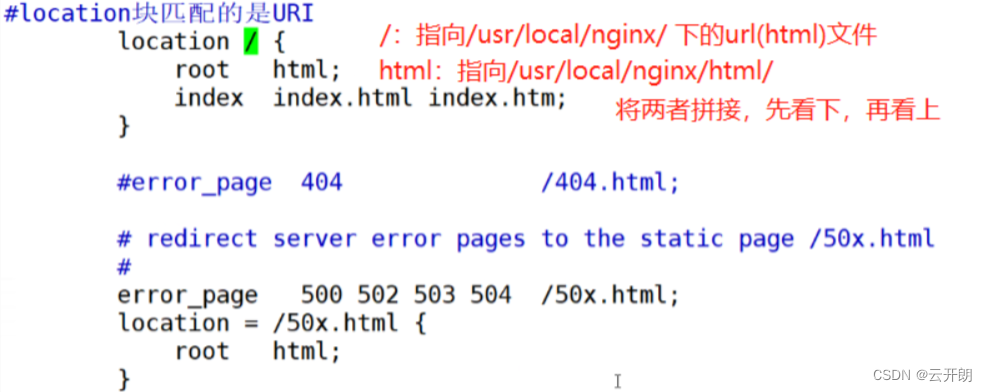
nginx 以及nginx优化
目录 nginx功能介绍 静态文件服务 反向代理 动态内容处理 SSL/TLS 加密支持 虚拟主机支持 URL 重写和重定向 缓存机制 日志记录 可扩展性和灵活性 nginx的主要应用场景 nginx常用命令 nginx另外一种安装方式 nginx常用的信号符: nginx配置文件详解 n…...
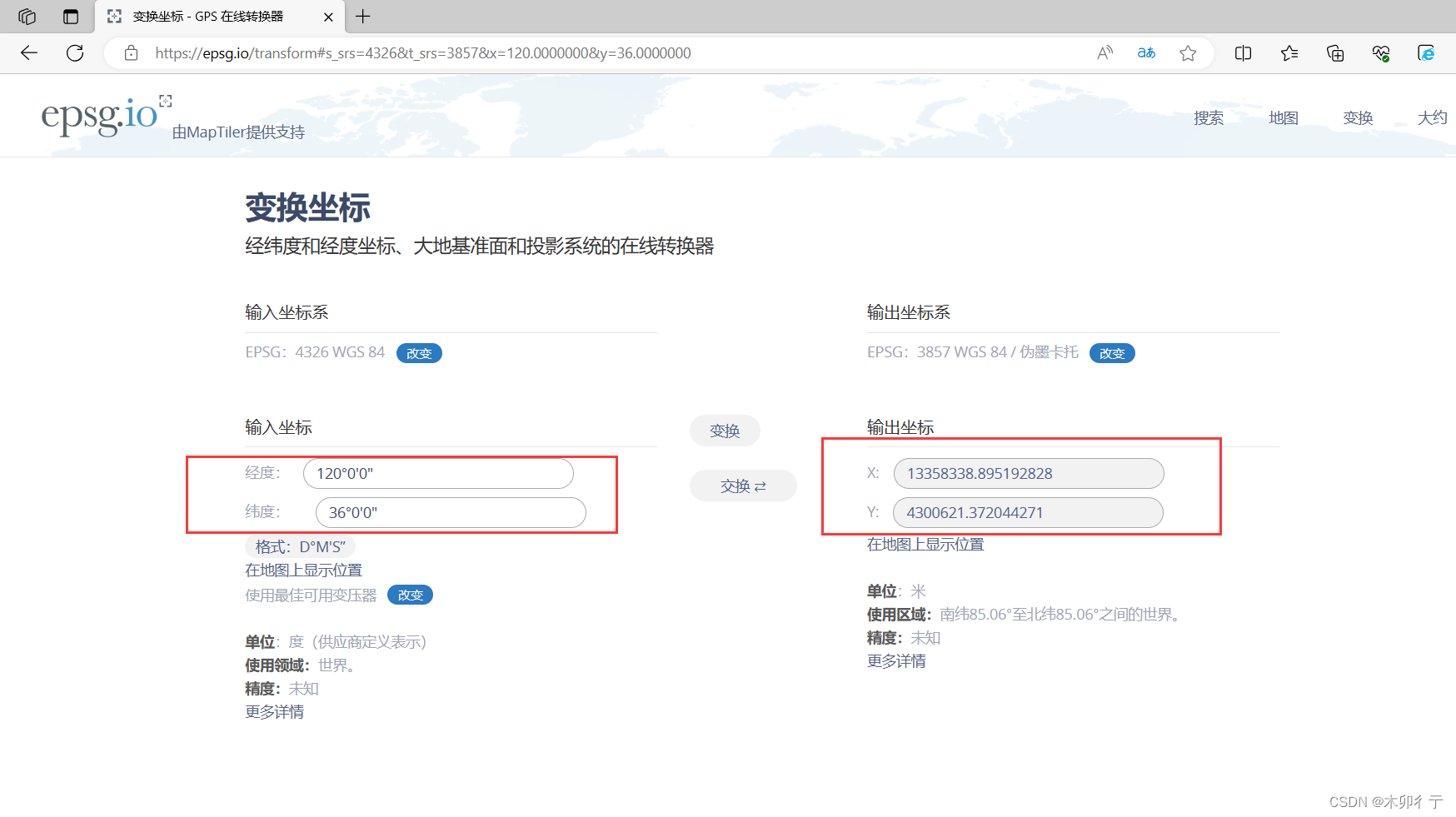
cesium学习记录04-坐标系
一、地理坐标系和投影坐标系的关系 地理坐标系 (Geographic Coordinate System, GCS) 定义:地理坐标系是一个基于三维地球表面的坐标系统。它使用经度和纬度来表示地点的位置。 特点: 使用经纬度来定义位置。 基于特定的地球参考椭球体。 适用于全球范…...

P5737 【深基7.例3】闰年展示
题目描述 输入 x , y x,y x,y,输出 [ x , y ] [x,y] [x,y] 区间中闰年个数,并在下一行输出所有闰年年份数字,使用空格隔开。 输入格式 输入两个正整数 x , y x,y x,y,以空格隔开。 输出格式 第一行输出一个正整数…...

Nacos的安装使用教程Linux
在 Linux 操作系统上安装和使用 Nacos 与 Windows 类似,以下是详细的步骤教程。我们将使用 Nacos 的 Standalone 模式进行安装和使用。请注意,对于生产环境,建议使用集群模式来实现高可用性和可扩展性。 步骤 1:准备环境 Java 安…...

数据结构-学习
参考: 数据结构-学习笔记_蓝净云_蓝净云的博客-CSDN博客...

【MFC】05.MFC六大机制:程序启动机制-笔记
MFC程序开发所谓是非常简单,但是对于我们逆向人员来说,如果想要逆向MFC程序,那么我们就必须了解它背后的机制,这样我们才能够清晰地逆向出MFC程序,今天这篇文章就来带领大家了解MFC的第一大机制:程序启动机…...
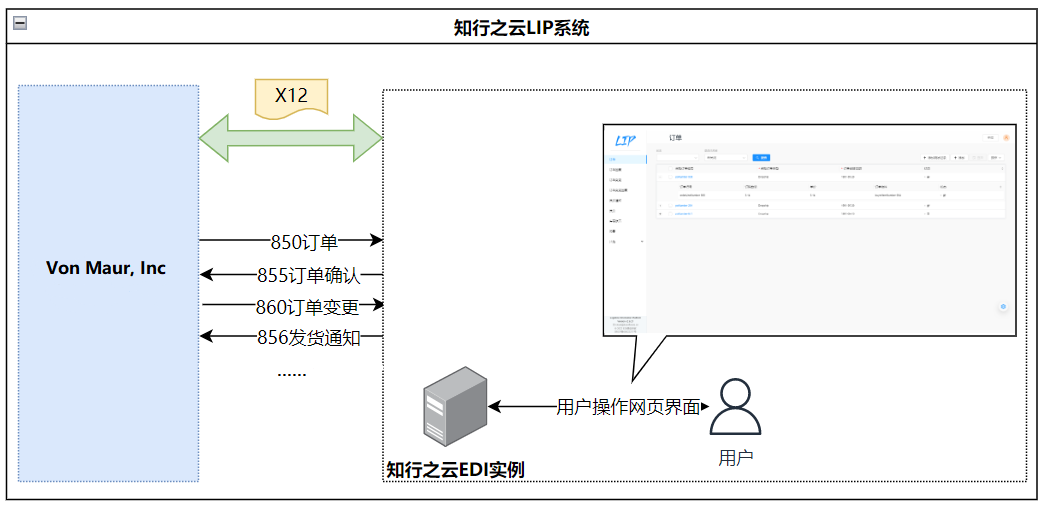
Von Maur, Inc EDI 需求分析
Von Maur, Inc 是一家历史悠久的卖场,成立于19世纪,总部位于美国。作为一家知名的零售商,Von Maur 主要经营高端时装、家居用品和美妆产品。其使命是为顾客提供优质的产品和无与伦比的购物体验。多年来,Von Maur 凭借其卓越的服务…...
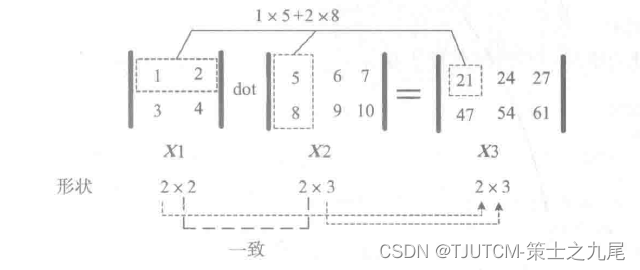
[深度学习入门]PyTorch深度学习[Numpy基础](上)
目录 一、前言二、Numpy概述三、生成Numpy数组3.1 从已有数据中创建数组3.2 利用random模块生成数组3.3 创建特定形状的多维数组3.4 利用arange和linspace函数生成数组 四、获取元素五、Numpy的算术运算5.1 对应元素相乘5.2 点积运算 六、后记 本文的目标受众: 对机…...

Excel vost 实现照光灯效果
如果你想要在 VSTO(Visual Studio Tools for Office)中实现在 Excel 中添加“照光灯”效果,你需要创建一个 VSTO 插件来实现这个功能。照光灯效果通常是指通过将非活动行或列进行高亮显示,以便更清楚地查看某一行或列的内容。以下…...

IntelliJ中文乱码问题
1、控制台乱码 运行时控制台输出的中文为乱码,解决方法:帮助 > 编辑自定义虚拟机选项… > 此时会自动创建出一个新文件,输入:-Dfile.encodingUTF-8,然后重启IDE即可,操作截图如下: 2、…...
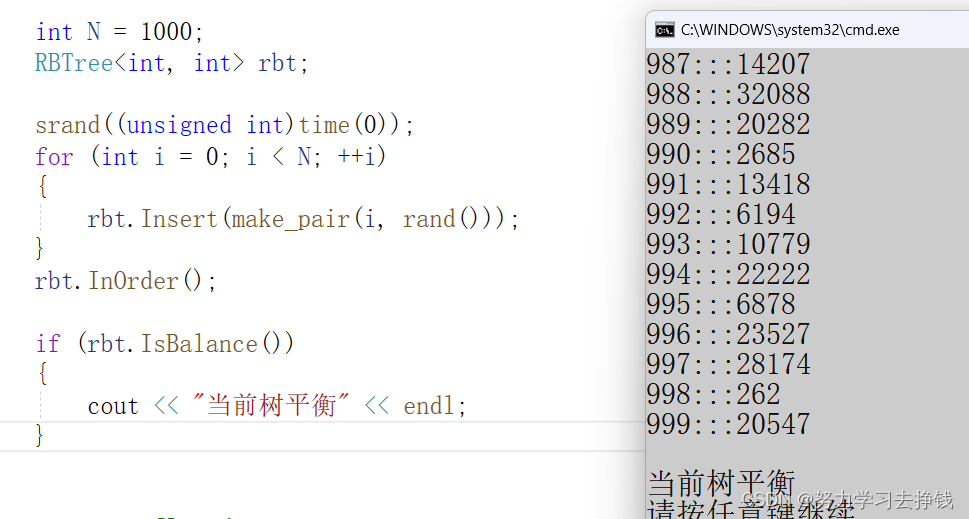
【C++】红黑树模拟实现插入功能(包含旋转和变色)
红黑树模拟实现并封装为map和set 前言正式开始红黑树概念红黑树基本要求大致框架树节点树 调整红黑树使其平衡第一种:cur红,p红,g黑,u存在且为红第二种:cur红,p红,g黑,u不存在或为黑…...
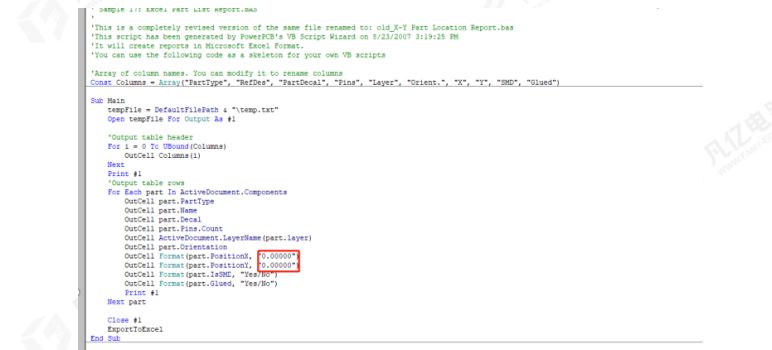
Pads输出器件坐标文件时,如何更改器件坐标精度
相信对于用pads软件的工程师么,在完成PCB设计的时候都需要输出生产文件给板厂和贴片厂,今天我们需要给大家介绍的是如何在在pads软件上面输出器件坐标文件以及如何更改器件坐标文件的精度。 首先我们需要点击工具-基本脚本-基本脚本接下来会跳到下面这个…...

Vuejs3父组传值给子组件
父组件代码 <script setup> import TextProps from ./components/TextProps.vue; import { reactive } from vue;const queryobj reactive({"a":1, "b":1}); const aryobj reactive([1,2,3]);</script><template><div class"…...
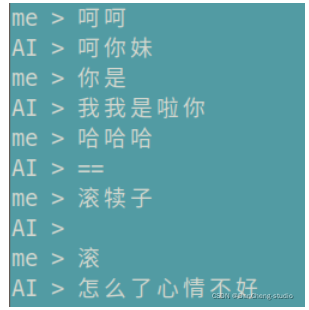
竞赛项目 深度学习的智能中文对话问答机器人
文章目录 0 简介1 项目架构2 项目的主要过程2.1 数据清洗、预处理2.2 分桶2.3 训练 3 项目的整体结构4 重要的API4.1 LSTM cells部分:4.2 损失函数:4.3 搭建seq2seq框架:4.4 测试部分:4.5 评价NLP测试效果:4.6 梯度截断…...

【剑指 の 精选】热门状态机 DP 运用题
题目描述 这是 LeetCode 上的 「剑指 Offer II 091. 粉刷房子」 ,难度为 「中等」。 Tag : 「状态机 DP」、「动态规划」 假如有一排房子,共 n 个,每个房子可以被粉刷成红色、蓝色或者绿色这三种颜色中的一种,你需要粉刷所有的房子…...

自动化实践-全量Json对比在技改需求提效实践
1 背景 随着自动化测试左移实践深入,越来越多不同类型的需求开始用自动化测试左移来实践,在实践的过程中也有了新的提效诉求,比如技改类的服务拆分项目或者BC流量拆分的项目,在实践过程中,这类需求会期望不同染色环境…...
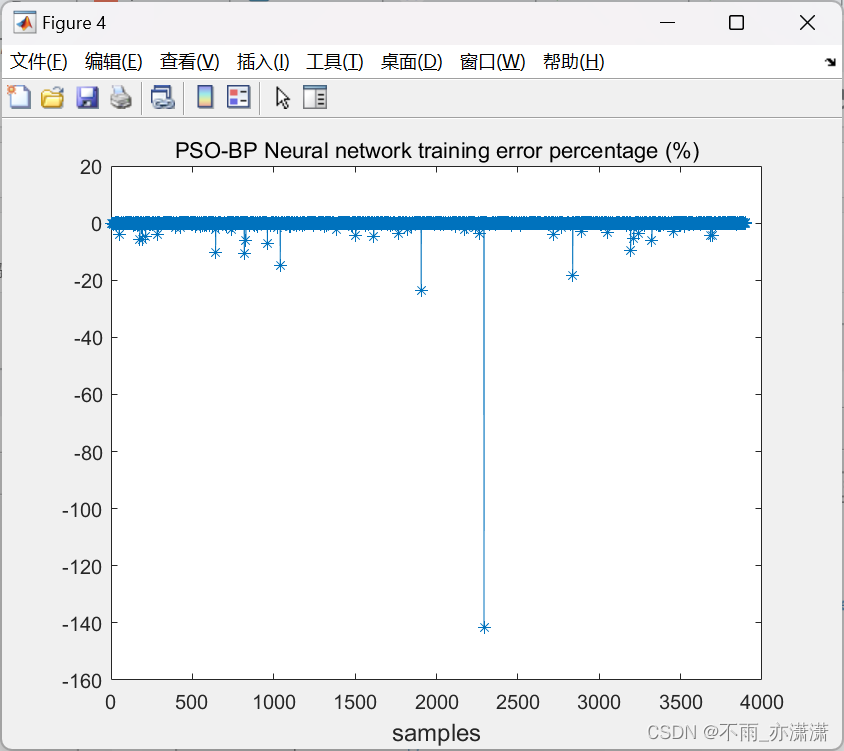
【Matlab】PSO优化(单隐层)BP神经网络
上一篇博客介绍了BP-GA:BP神经网络遗传算法(BP-GA)函数极值寻优——非线性函数求极值,本篇博客将介绍用PSO(粒子群优化算法)优化BP神经网络。 1.优化思路 BP神经网络的隐藏节点通常由重复的前向传递和反向传播的方式来决定&#…...
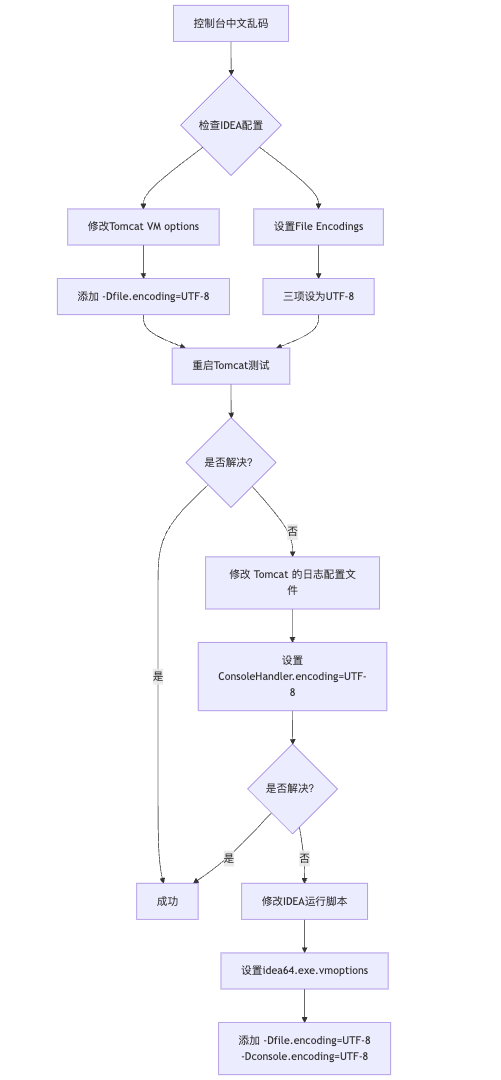
IDEA运行Tomcat出现乱码问题解决汇总
最近正值期末周,有很多同学在写期末Java web作业时,运行tomcat出现乱码问题,经过多次解决与研究,我做了如下整理: 原因: IDEA本身编码与tomcat的编码与Windows编码不同导致,Windows 系统控制台…...

变量 varablie 声明- Rust 变量 let mut 声明与 C/C++ 变量声明对比分析
一、变量声明设计:let 与 mut 的哲学解析 Rust 采用 let 声明变量并通过 mut 显式标记可变性,这种设计体现了语言的核心哲学。以下是深度解析: 1.1 设计理念剖析 安全优先原则:默认不可变强制开发者明确声明意图 let x 5; …...
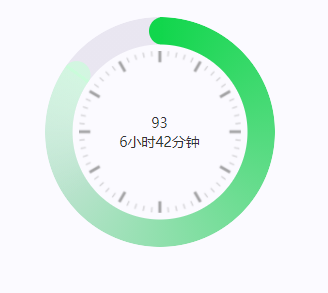
css实现圆环展示百分比,根据值动态展示所占比例
代码如下 <view class""><view class"circle-chart"><view v-if"!!num" class"pie-item" :style"{background: conic-gradient(var(--one-color) 0%,#E9E6F1 ${num}%),}"></view><view v-else …...

前端倒计时误差!
提示:记录工作中遇到的需求及解决办法 文章目录 前言一、误差从何而来?二、五大解决方案1. 动态校准法(基础版)2. Web Worker 计时3. 服务器时间同步4. Performance API 高精度计时5. 页面可见性API优化三、生产环境最佳实践四、终极解决方案架构前言 前几天听说公司某个项…...
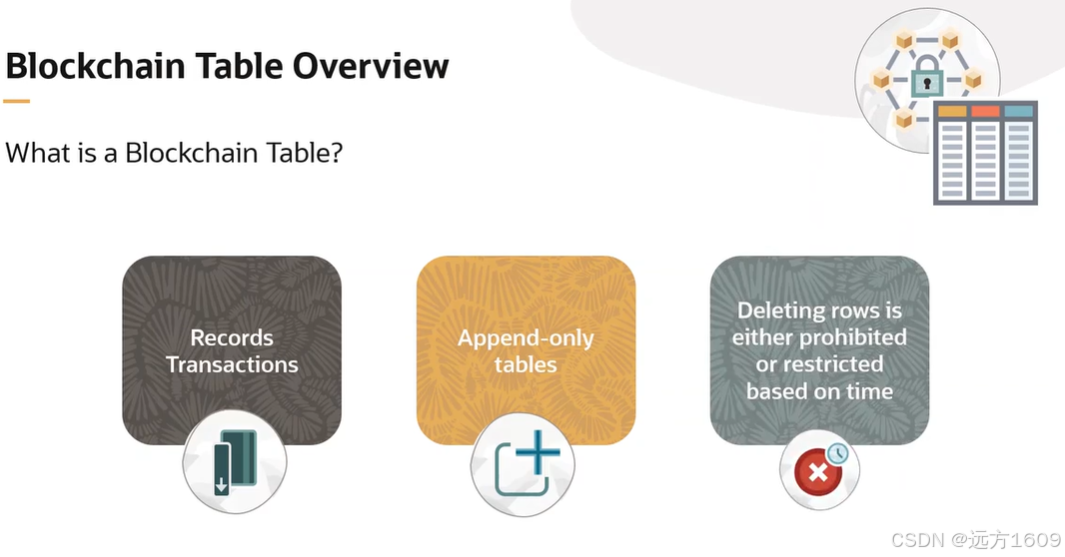
23-Oracle 23 ai 区块链表(Blockchain Table)
小伙伴有没有在金融强合规的领域中遇见,必须要保持数据不可变,管理员都无法修改和留痕的要求。比如医疗的电子病历中,影像检查检验结果不可篡改行的,药品追溯过程中数据只可插入无法删除的特性需求;登录日志、修改日志…...
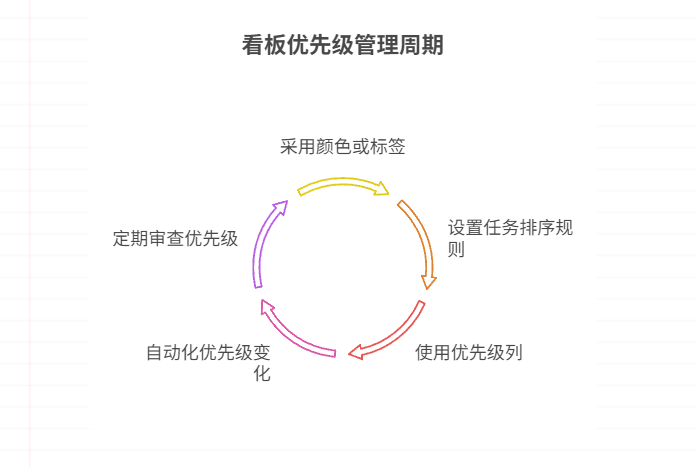
如何在看板中体现优先级变化
在看板中有效体现优先级变化的关键措施包括:采用颜色或标签标识优先级、设置任务排序规则、使用独立的优先级列或泳道、结合自动化规则同步优先级变化、建立定期的优先级审查流程。其中,设置任务排序规则尤其重要,因为它让看板视觉上直观地体…...
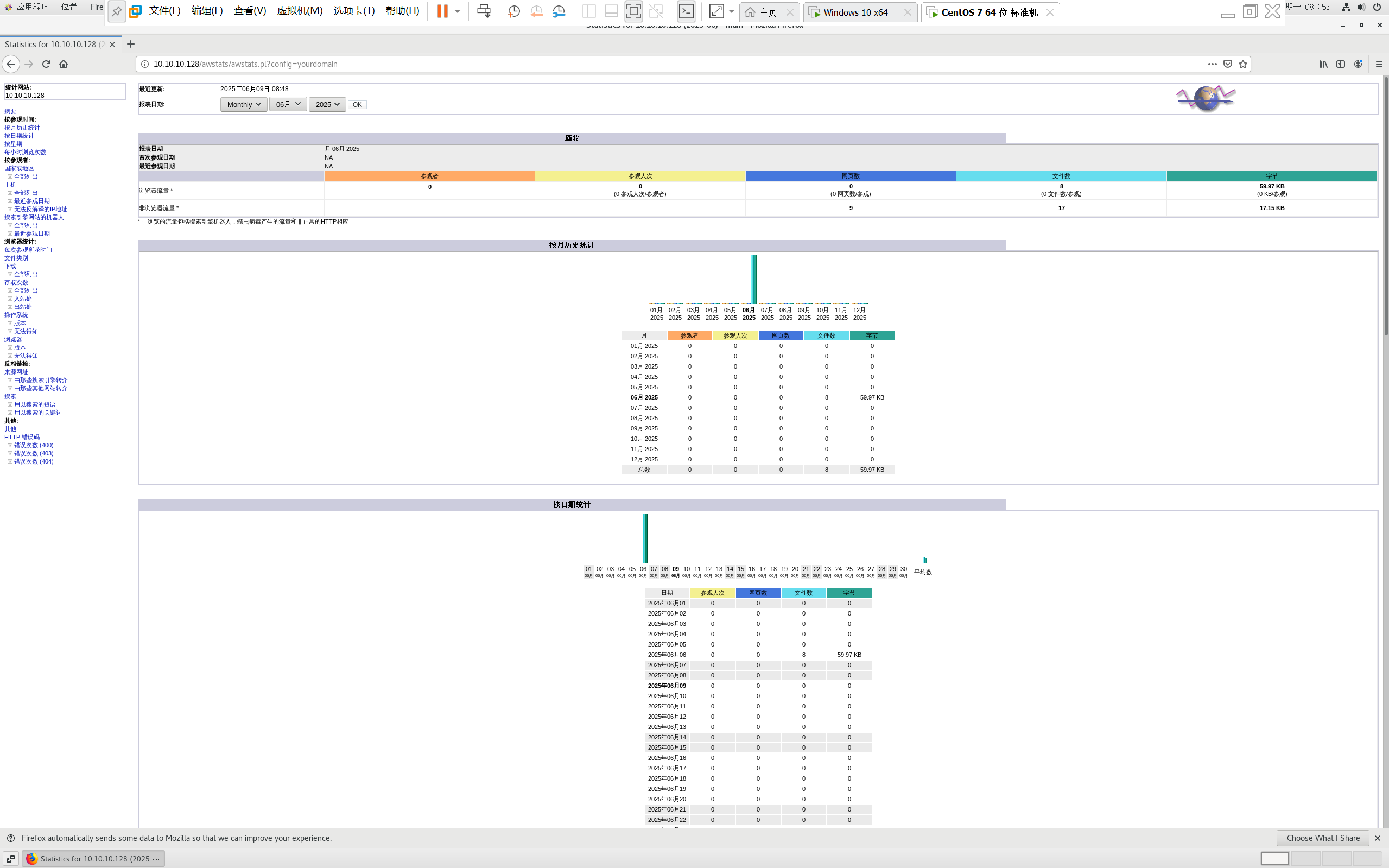
centos 7 部署awstats 网站访问检测
一、基础环境准备(两种安装方式都要做) bash # 安装必要依赖 yum install -y httpd perl mod_perl perl-Time-HiRes perl-DateTime systemctl enable httpd # 设置 Apache 开机自启 systemctl start httpd # 启动 Apache二、安装 AWStats࿰…...
 自用)
css3笔记 (1) 自用
outline: none 用于移除元素获得焦点时默认的轮廓线 broder:0 用于移除边框 font-size:0 用于设置字体不显示 list-style: none 消除<li> 标签默认样式 margin: xx auto 版心居中 width:100% 通栏 vertical-align 作用于行内元素 / 表格单元格ÿ…...

PAN/FPN
import torch import torch.nn as nn import torch.nn.functional as F import mathclass LowResQueryHighResKVAttention(nn.Module):"""方案 1: 低分辨率特征 (Query) 查询高分辨率特征 (Key, Value).输出分辨率与低分辨率输入相同。"""def __…...

MySQL JOIN 表过多的优化思路
当 MySQL 查询涉及大量表 JOIN 时,性能会显著下降。以下是优化思路和简易实现方法: 一、核心优化思路 减少 JOIN 数量 数据冗余:添加必要的冗余字段(如订单表直接存储用户名)合并表:将频繁关联的小表合并成…...
